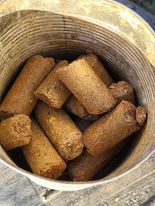Raising cattle on a homestead is a rewarding but demanding endeavor that can greatly enhance your self-sufficiency and provide valuable resources such as meat, milk, and leather. Whether you’re a seasoned rancher or a beginner taking your first steps into livestock management, understanding the needs and challenges of cattle is crucial for success. From selecting the right breed to ensuring proper nutrition and health care, raising cattle requires careful planning, dedication, and a commitment to the well-being of your herd.

Understanding the Commitment
Raising cattle requires a significant time and financial commitment. Cattle need daily care, including feeding, watering, and health checks, regardless of the weather. Understanding this commitment is crucial before starting a cattle herd on your homestead. It doesn’t matter if you have 5 or 100 head they need to be checked on often.
Choosing the Right Breed
Not all cattle breeds are suitable for every homestead or purpose. Some breeds are better for meat production, while others excel in milk production or are easier to manage for beginners. Also depending upon where you live can affect what breed you get. The northern climates need a hardier breed like Angus, Simmental or even Highlander. While the southern warmer climates a Brahma cross, Longhorn or Charolais would thrive. Researching and selecting the right breed can greatly impact your success.

Providing Proper Nutrition
Cattle have specific dietary needs that change with the seasons and their stage of life. Access to quality pasture, hay, and supplements is essential for their health and productivity. Cattle can eat a lower grade hay but need supplemented with protein pellets called cake and free choice to mineral. Understanding these nutritional requirements is key to maintaining a healthy herd.

Building Suitable Infrastructure
Raising cattle requires sturdy infrastructure, including fencing, shelters, and handling facilities. Strong fencing is necessary to keep cattle secure and prevent them from wandering off. Additionally, shelters protect them from harsh weather, and handling facilities make it easier to manage health care and other tasks. Having a cattle chute is a must to work the cattle. They are very strong and can hurt you without even trying too.
Understanding Breeding and Calving
If you’re planning to breed cattle, understanding the breeding process and being prepared for calving is crucial. Breeding schedules, calving seasons, and knowing how to assist a cow during calving are important skills to learn. Proper planning can prevent problems and ensure the health of both cow and calf.
Managing Herd Health
Keeping your cattle healthy involves regular vaccinations, parasite control, and monitoring for common illnesses. Having a basic understanding of cattle health issues and a relationship with a large-animal veterinarian is essential. Preventive care is critical to avoid costly and stressful health problems.

Water Access and Management
Cattle require a constant and reliable source of clean water. They can drink 10 to 20 gallons a day per cow depending on temperature and if they are nursing a calf. Inadequate water access can lead to health issues and decreased productivity. Ensuring that your cattle always have enough water is a fundamental aspect of cattle management.

Grazing Management
Proper grazing management is essential for maintaining pasture health and ensuring your cattle get enough to eat. Rotational grazing and pasture rotation can prevent overgrazing and improve pasture quality. Understanding grazing principles helps in maintaining both the land and the herd. Plan on feeding cows in a pen through the winter months.

Financial Planning
Raising cattle involves significant upfront and ongoing costs, including purchasing cattle, feed, fencing, and veterinary care. It’s important to create a realistic budget and financial plan to cover these expenses. Understanding the financial aspects helps in making informed decisions and avoiding financial strain.
Understanding the Market
If you’re raising cattle for meat or milk production, understanding the market is crucial. Knowing when to sell, how to price your products, and where to find buyers are all important considerations. Being market-savvy can help ensure that your cattle operation is profitable and sustainable.
These are the main topics that will be discussed in the cattle topic. There is a lot of knowledge needed to run a cattle operation and many different ideas on how to do it. In this part of my blog I will discuss how we started our cattle ranch with 4 heifers on 80 acres and have grown it to 100+ head on 450 acres.
I hope you enjoyed reading this article and if you have any questions please email me at luron@homesteadingwithgrandma.com. Hope to visit with you soon.
